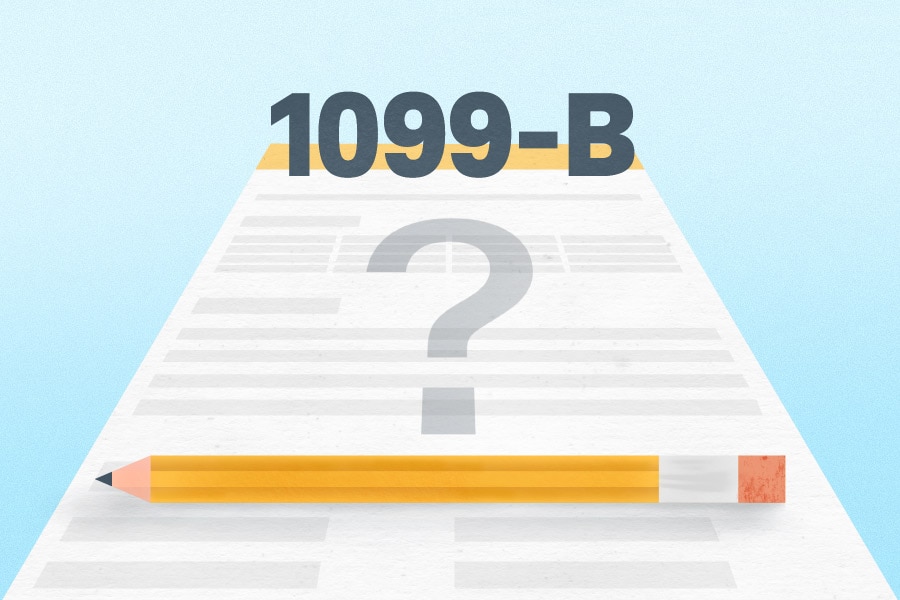
During tax season, traders can expect to receive a Form 1099-B. However, for an option trader, a 1099-B might appear a little different. Here we'll discuss what options traders might expect with their Form 1099-B.
Schwab.com does not provide tax advice. Consider consulting with a tax-planning professional with regard to personal circumstances.
Covered vs. non-covered cost basis
Non-covered basis is the cost basis1 for securities purchased prior to the date at which reporting by brokers was made mandatory by a tax law passed more than a decade ago.
Since the law passed, brokers are required to report cost basis information on Form 1099-B and to the IRS after the sale of certain securities, including stocks, bonds, options, exchange-traded funds, and mutual funds. Mandatory reporting was rolled out in phases between 2011 and 2016:
- January 1, 2011: Equities
- January 1, 2012: Mutual funds and equities purchased through dividend reinvestment plans
- January 1, 2014: Fixed-rate debt instruments and options
- January 1, 2016: Variable-rate debt instruments and other complex securities
Traders who sell securities purchased prior to the dates listed above may not see cost basis information included on their 1099-B, or it may be incomplete. This doesn't mean the non-covered cost basis isn't reportable; rather, it's not required to be reported by a broker to the IRS. But even though the broker isn't required to report the non-covered cost basis, traders are still responsible for including this information on Schedule D of their tax return.
Where to find cost basis
Schwab clients can view their cost basis information on covered securities by logging in to their account at Schwab.com. Under Accounts, select History and then Realized Gain/Loss to see the total cost basis.
Didn't receive a 1099? This might be why
Brokers like Schwab are required to report certain info to the IRS, but it can differ from what individual investors are required to report.
Non-covered securities are tracked at Schwab, but depending on the year the security was purchased (refer to the rollout dates above), the original purchase information may not be available in a client's account.
Current cost basis information, including information about realized gains and losses, is included on Form 1099-B for taxable accounts. The non-covered cost basis will display in the non-covered section of the form but won't be reported to the IRS. Having the cost basis for covered and non-covered securities in one place may help streamline the tax-filing process.
Options trading and the 1099-B
Understanding how options information is reported on a 1099-B can be helpful for option traders during tax season. Below are two example scenarios and explanations for how reporting on the 1099-B works for options.
Scenario #1: Buy long, then sell
Let's say a trader bought an XYZ July 2023 95-strike put options contract for $5.30 on September 24, 2022. By the beginning of February 2023, the stock price was continuing to decline and the trader decided to sell it for $1.16. The cost was $5.30, plus transaction costs, and the proceeds were $1.16, minus transaction costs, which the 1099-B would reflect. (The multiplier for standard equity options is 100, so it's really a cost of $530 per contract with proceeds of $116 per contract, not including transaction costs.)
Next, let's switch the scenario to see what happens if a trader sells it to open the position.
Scenario #2: Sell to open, then buy to close
What if the trader in the above example sold the XYZ put options contract to open at $5.30, then closed it out with a $1.16 purchase?
The 1099-B will show a proceeds amount of $4.14 ($414 with the multiplier, and it will be modified by transaction costs) and a basis of $0. The IRS mandates that a trader with a cash-settled, written contract report only the gain or loss as proceeds. A tax document will not reflect the $5.30 or $1.16 amounts, just the profit of $414 minus transaction costs.
If this had been a loss, the proceeds amount would be negative.
Selling (writing) options
When a trader "writes an option," it means they're selling an options contract as an opening trade. If the position is closed prior to expiration, the reporting notes the cash difference between the sale price and the purchase price with transaction costs figured in. However, if an options contract is exercised or assigned, it will settle in the underlying security, not cash.
When an options contract expires worthless, the premium and transaction costs paid (for option buyers) will be a loss. Option writers will realize a gain equal to the amount of the cash received (the premium minus transaction costs) for selling the contract.
The chart below illustrates tax reporting based on different options outcomes.
- If you ____
- you have ____ the underlying at the strike price.
- When ____
- your ____
- equals the strike price ____ the contract's premium (+/- transaction costs).
-
If you ____purchase a call,you have ____ the underlying at the strike price.the right to buyWhen ____exercised,your ____cost basis of shares purchasedequals the strike price ____ the contract's premium (+/- transaction costs).plus
-
If you ____purchase a put,you have ____ the underlying at the strike price.the right to sellWhen ____exercised,your ____proceeds from the sale of sharesequals the strike price ____ the contract's premium (+/- transaction costs).minus
-
If you ____sell a call,you have ____ the underlying at the strike price.the obligation to sellWhen ____assigned,your ____proceeds from the sale of sharesequals the strike price ____ the contract's premium (+/- transaction costs).plus
-
If you ____sell a put,you have ____ the underlying at the strike price.the obligation to buyWhen ____assigned,your ____cost basis of shares purchasedequals the strike price ____ the contract's premium (+/- transaction costs).minus
The contract will not be a reportable line item on a trader's 1099 if the contract was exercised/assigned. It's built into the cost or proceeds, depending on the type of transaction.
Did an options exercise or assignment lead to a long position in XYZ? If so, even though the contract is "done," it isn't taxable until the shares of XYZ are sold. Whenever XYZ is sold, the cost basis is the acquisition cost, which is the strike price and the premium adjustment, plus transaction costs.
Special case: Mark-to-market on broad-based indexes and futures
Options on broad-based indexes like the S&P 500® index (SPX) are treated differently for tax purposes. Broad-based index options (as well as futures contracts and options on futures) fall under Section 12562 of the IRS tax code and are required to be treated with mark-to-market3 status. This means that even if a trader didn't liquidate a position by the last trading day of the year, the IRS treats it as if they did and uses the closing price of that final trading day to figure the unrealized gain or loss. The closing price is "marked" and used as the cost basis going forward.
For more in-depth information about reporting, it might make sense to contact a tax professional who can help with forms.
1The original value of an asset for tax purposes (usually the purchase price) adjusted for stock splits or stock dividends and return of capital distributions. Capital gain is then equal to the difference between the asset's cost basis and the sales price.
2A type of investment defined by the Internal Revenue Code as a regulated futures contract, foreign currency contract, non-equity option, dealer equity option, or dealer securities futures contract. Each contract held by a taxpayer at the end of the tax year is treated as if it was sold for its fair market value, and gains or losses are treated as either short-term or long-term capital gains.
3Mark-to-market or fair value accounting refers to accounting for the "fair value" of an asset or liability based on the current market price, or for similar assets and liabilities, or based on another objectively assessed "fair" value.
Options carry a high level of risk and are not suitable for all investors. Certain requirements must be met to trade options through Schwab. Please read the options disclosure document titled Characteristics and Risks of Standardized Options before considering any options transaction. Supporting documentation for any claims or statistical information is available upon request.
Uncovered options strategies are only appropriate for traders with the highest risk tolerance, involve potential for unlimited risk, and are only allowed in margin accounts.
Futures and futures options trading involves substantial risk and is not suitable for all investors. Please read the Risk Disclosure Statement for Futures and Options prior to trading futures products. Futures and forex accounts are not protected by the Securities Investor Protection Corporation (SIPC). Forex accounts do not receive a preference in any bankruptcy proceeding pursuant to Part 190 of the CFTC's regulations. Futures, futures options, and forex trading services provided by Charles Schwab Futures and Forex LLC. Trading privileges subject to review and approval. Not all clients will qualify. Forex accounts are not available to residents of Ohio or Arizona.
Charles Schwab Futures and Forex LLC, a CFTC-registered Futures Commission Merchant and NFA Forex Dealer Member. Charles Schwab Futures and Forex LLC is a subsidiary of The Charles Schwab Corporation.
The information and content provided herein is general in nature and is for informational purposes only. It is not intended, and should not be construed, as a specific recommendation, individualized tax, legal, or investment advice. Tax laws are subject to change, either prospectively or retroactively. Where specific advice is necessary or appropriate, individuals should contact their own professional tax and investment advisors or other professionals (CPA, Financial Planner, Investment Manager) to help answer questions about specific situations or needs prior to taking any action based upon this information.
0923-3F1N


